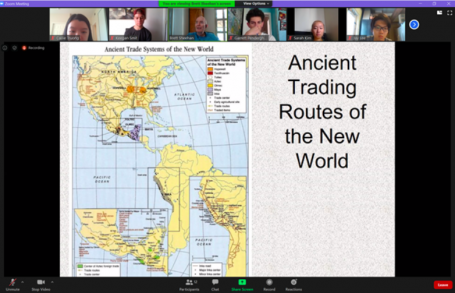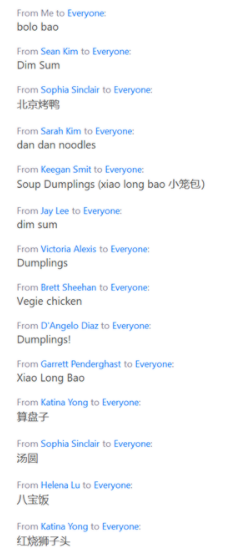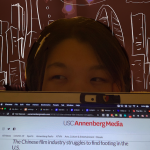Helena Lu and Callie Truong
Hello everyone! Today was the second day of class for the 2020 Global East Asia program. We’ve started to become more familiar with one another and adapt to the online format of the class!
Today the professor played the classic song “月亮代表我的心” (The Moon Represents My Heart) by Teresa Teng, the most famous Chinese pop singer in the 1970s and 1980s. We then dove into our discussion of globalization and its many facets and practiced analyzing images. Everyone had really insightful analyses of the Haier advertisement we looked at. It was beneficial to see how we could apply what we learned about globalization to pictures we see in real life. Over the next few weeks, we’ll continue to develop our image analysis skills and apply them in our own projects!
Professor Sheehan then gave us a lecture on globalization before 1850. Globalization, far from being a new phenomenon, has been around for about as long as humans have. The professor urged us not to think of globalization through a Eurocentric perspective, and discussed the Silk Road and the expeditions of Zheng He, whose global expeditions had tens of thousands of people and ships exponentially larger than Christopher Columbus’. It was really interesting to see how global connections functioned throughout history in ways we don’t typically think about.
We then held a discussion of the reading and its significance in understanding Chinese brands’ perspectives in marketing before beginning to split off into different groups based on our research interests. We have a ways to go before we can really start our research projects, but everything is starting to come together!
The professor then shifted his lecture to Chinese history before 1850. This was very interesting because we learned about the different global connections that were already influencing China much before the years we typically think of as “globalized”. The Ming emperor, for instance, had a palace modeled after Versailles, and some wealthy Americans owned Chinese porcelain with American motifs on it. Chinese and Western markets have influenced each other for a long time.
We closed off the class today with a fun poll of everyone’s favorite Chinese foods. We saw an interesting range of answers!
Though COVID has limited a lot of what we can do in this class, hopefully, we’ll work together to continue our research and have productive discussions in the coming weeks!
- Keegan Smit reading a chapter from Brand Breakout with his adorable dog by his side
- Professor Sheehan preparing for today’s class with an image analysis activity
- Helena Lu researching possible project topics






